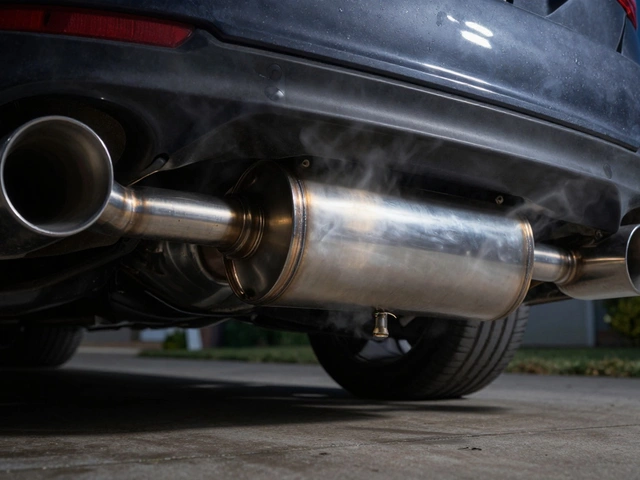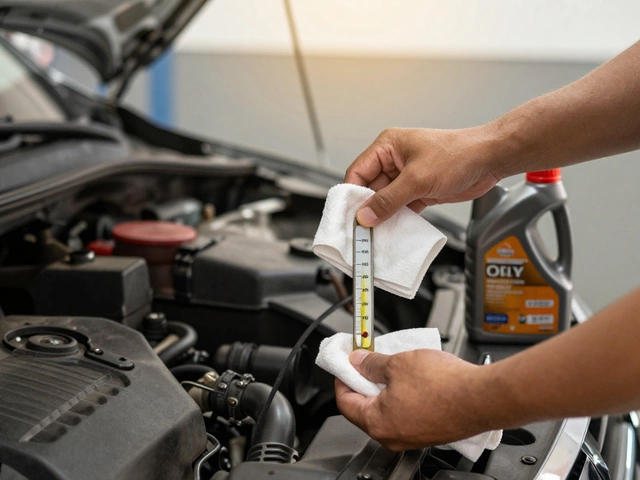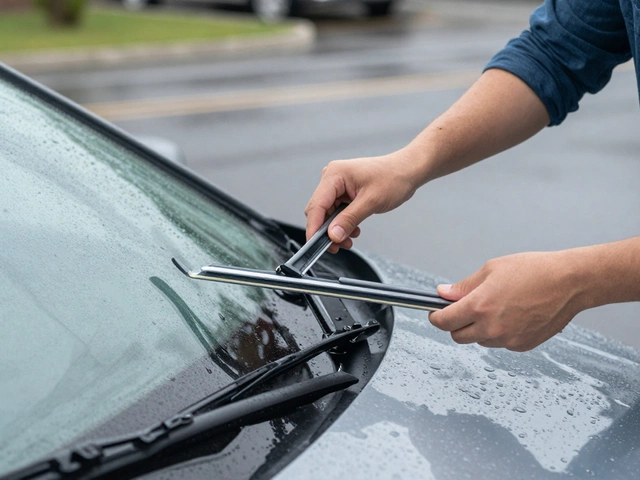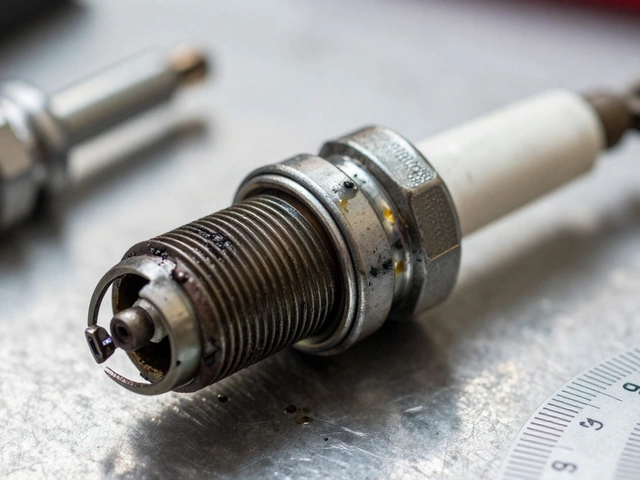Vehicle suspension plays a crucial role in how your car handles and the comfort it offers while driving. When the suspension is too soft, you might encounter problems that can affect both performance and safety.
Understanding what makes suspension soft and the implications it brings is vital for any car owner. This guide will take you through the essentials, from recognizing symptoms to making necessary adjustments. It’s all about striking the right balance to ensure that your driving experience remains safe and enjoyable.
- The Basics of Vehicle Suspension
- Symptoms of Too Soft Suspension
- Impact on Vehicle Handling
- Effects on Ride Comfort and Passenger Safety
- Adjusting Suspension for Optimal Performance
- Maintenance Tips for Healthy Suspension
The Basics of Vehicle Suspension
When we talk about vehicle suspension, we dive into a world of sophisticated components working in harmony to provide both comfort and control. Your car's suspension system might seem like a hidden marvel, silently doing its job beneath the vehicle's frame, but its importance is paramount. At its heart, the suspension's primary job is to smooth out the ride and keep the wheels firmly in contact with the road. Without a well-functioning suspension system, even the shortest trip could become a bone-jarring journey. Soft suspension plays into this more than you might think. A soft setup can make your ride feel like you're floating on clouds, especially on smooth highways. Still, it might cause your vehicle to season its passengers with a feeling of wallowing or poor road feedback when changes in direction or quick stops come into play. The tension between ride comfort and responsive handling becomes evident the more you contemplate it, and getting this balance right is part and parcel of a well-executed suspension system.
The unsung heroes of your suspension system include springs, dampers, and struts. Springs, usually either coil or leaf types, are tasked with bearing the car's weight while allowing controlled motion over various terrains. Coil springs are typically found on most modern vehicles and act like a buffer between the vehicle and wheels, absorbing impacts. The damper, often referred to as a shock absorber, functions to control the spring motion and ensure that your car remains stable and smooth. It's the subtle dance between these components that makes every drive possible. Additionally, we can't forget the role played by bushings and control arms, which add to vehicle stability and handling precision.
Did you know that the concept of suspension dates back centuries? In the earliest carriages, engineers used primitive leaf springs to reduce bounce. Fast forward to the modern day, and manufacturers have elevated the technology to such heights that smart suspensions now dynamically adapt to the road surface in real-time. For example, the engineers at respected brands like Audi and Mercedes-Benz introduced air suspension systems as part of their quest for the ultimate ride equilibrium. These systems aren’t just luxury add-ons; they illustrate the critical nature of suspension in our pursuit of driving perfection.
"The right suspension makes the difference between an indulgent cruise and a white-knuckle ride," automotive engineer Chris Harrison once remarked, encapsulating the struggle to balance precision with pampering.
The mechanics don't end there; vehicle suspension is also intrinsically linked to tire wear and fuel efficiency. A properly dampened system ensures that tires contact the road at optimal angles and pressures, promoting even wear and longer tire life. Surprisingly, it can also contribute to better gas mileage, as an efficiently suspended vehicle faces less rolling resistance. Vehicle dynamics and safety concerns likewise underscore the importance of regular maintenance and inspection to avoid wear-induced steering problems or unexpected failures on the road. A suspension in tip-top condition is not just about comfort—it's about securing your drive.
Symptoms of Too Soft Suspension
Driving with a soft suspension might not immediately alert you to issues, but certain symptoms will eventually make themselves evident, and these can't be ignored for long. One of the most noticeable signs is a pronounced body roll when maneuvering around corners. This happens because the softness causes the vehicle to dip significantly, which can be alarming for both the driver and passengers. If you find the car feels like it's floating or swaying when you take even gentle turns, it’s time to inspect the suspension system. Additionally, a soft suspension can cause excessive bouncing after hitting a bump or pothole, prolonging the time it takes for your vehicle to stabilize once the obstacle is passed.
Another important aspect that shouldn't be overlooked is the braking efficiency reduction due to a soft suspension. When the suspension is overly pliant, it can lead to nose-diving, a condition where the vehicle leans forward during braking. This not only affects the stopping distance but also compromises vehicle control. Moreover, frequent bottoming out is another evident symptom. You may notice this when even small bumps cause the vehicle to hit the suspension bump stops, resulting in a harsh and uncomfortable ride. This repeated action can eventually damage the underside of your vehicle. Understanding and identifying these symptoms is crucial to maintaining a safe and well-functioning vehicle, enhancing both the ride quality and longevity of your suspension system.
Noise often accompanies suspension issues. A soft suspension can lead to clunking or rattling noises, especially when navigating uneven terrain. Such noise typically means that parts of the suspension or associated components are coming into contact when they shouldn't. Alongside noises, abnormal tire wear patterns are another symptom to be wary of. If your tires are wearing unevenly, it might be due to the excessive movement allowed by a soft suspension. Keeping an eye on any tire tread irregularities could prevent more extensive issues from developing. And, if you're still unsure whether your vehicle suspension softness is causing problems, it's wise to have a trusted mechanic take a look, as they'll be able to confirm any suspicions with professional accuracy.
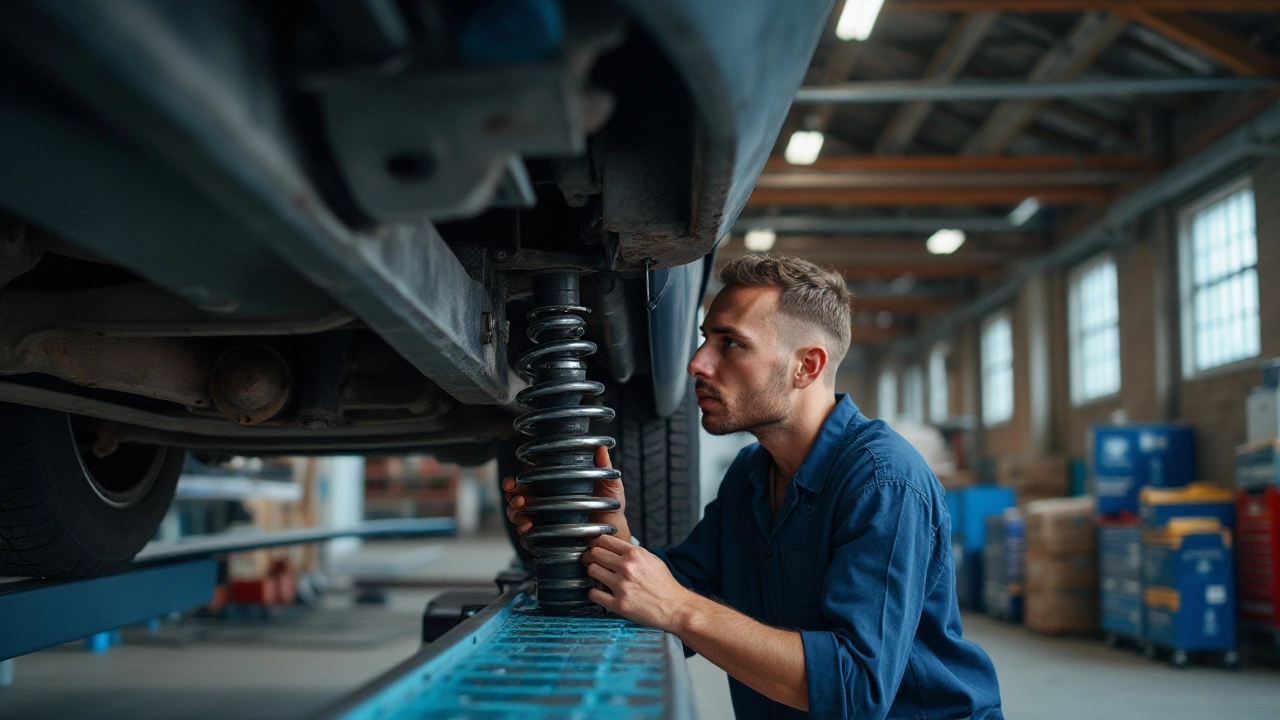
Impact on Vehicle Handling
When your vehicle's suspension is overly soft, it can dramatically alter the way your car handles. This might seem like a minor issue at first, but it becomes more apparent when you try to navigate tight corners, sudden stops, or rough terrains. With a soft suspension setup, your car is more prone to roll, meaning the body leans significantly in corners. This not only affects steering precision but also increases the risk of losing grip on the road, especially during high-speed maneuvers.
Consider a scenario where you're driving on a twisty mountain road. A soft suspension can cause the car to feel wobbly and less responsive to steering inputs. This sluggishness is due to excessive body movements that divert the vehicle's weight unevenly, causing understeer or oversteer tendencies. Understeer occurs when the front wheels lose grip and the car drifts wide of the intended path, while oversteer is when the rear wheels lose traction, making the car spin out. Both handling issues are dangerous, particularly in harsh weather conditions where roads can be slippery.
An interesting fact to note is that sports cars usually feature stiffer suspensions to enhance car handling and control. However, a typical family car does not require such rigidity, as the focus is on comfort rather than performance. Yet, finding the right balance between soft and stiff suspension is critical to maintain both comfort and control. As automotive expert Carroll Shelby once said,
Nothing handles well when it's wallowing like a sofa down a twisty road.This rings true, especially for vehicles that attempt to balance comfort with performance.
Furthermore, a soft suspension can also affect braking efficiency. As you apply the brakes, the car's weight shifts forward, causing the front end to dip. This dive can cause an uneven distribution of braking force, potentially leading to a longer stopping distance. In high-performance or emergency braking situations, a vehicle with soft suspension won't perform as sharply as one with a balanced setup. The longer stopping distances could mean the difference between avoiding a collision and meeting with one.
Clearly, a soft suspension impacts vehicle dynamics in multiple ways. For drivers who value control and responsiveness in their cars, it's vital to ensure the suspension is neither too soft nor too stiff. Regularly checking your vehicle suspension system for signs of wear or damage is an essential part of maintaining optimal handling performance. In some instances, investing in adjustable suspensions that allow you to switch between comfort and performance modes can be beneficial. This way, you have the flexibility to adapt to various driving conditions without compromising control or ride quality.
Effects on Ride Comfort and Passenger Safety
When discussing soft suspension, one of the most significant considerations is the impact it has on ride comfort and the safety of passengers. Having a soft suspension can make the ride feel exceptionally cushioned, almost like gliding on a cloud, especially over rough or uneven terrains. This might sound appealing initially, as passengers enjoy a smoother experience. However, the excessive give in the suspension can alter how your vehicle responds to driving conditions. Overly soft suspension setups may lead to increased body roll during cornering, which can make the vehicle feel unstable, especially at higher speeds or during sudden maneuvers.
This increased body roll can result in a lack of precision in handling, leading to a disconnected feel from the road. Drivers may have to constantly correct their steering to keep the vehicle on the desired track. In such scenarios, the vehicle's responsiveness is compromised, posing a potential safety risk. Moreover, a vehicle with soft suspension might struggle to handle the weight transfer effectively during acceleration and braking, increasing the stopping distance and affecting cornering ability. This can be especially disconcerting in emergency situations where swift and precise handling is required to navigate potentially dangerous conditions safely.
Passenger safety is another critical concern. When a car exhibits excessive body roll or pitches forward or backward during braking or acceleration, it can heighten the chances of motion sickness among passengers. The constant rocking motion can be unsettling and discomforting, especially for younger passengers or those sitting in the rear seats. Moreover, increased suspension travel without adequate damping can lead to bottoming out, where the suspension compresses fully upon hitting bumps, causing a harsh jolt instead of the intended smooth ride.
Balancing Comfort and Safety
Finding a balance between ride comfort and safety necessitates careful suspension tuning and sometimes, enhancements to the existing system through upgrading components. Automotive experts often recommend selecting suspension setups that emulate vehicles' design specs or ones that offer adjustable firmness settings. Such setups allow users to tailor the suspension's response based on different driving conditions and personal preferences. This customization can be particularly beneficial in vehicles used for both daily commuting and recreational off-road activities.
"A well-balanced suspension ensures that you enjoy a comfortable ride without compromising vehicle control at any point," says John Neff, an automotive columnist with decades of experience in the industry.
The harmony between ride comfort and passenger safety involves ensuring that your vehicle suspension is neither too stiff nor too soft, maintaining optimal contact with the road surface while catering to various driving scenarios. Adjustments and regular maintenance, including shock absorber checks and suspension alignments, play a crucial role. It’s not just about comfort; it’s about maintaining the control needed to ensure a secure ride for everyone on board.

Adjusting Suspension for Optimal Performance
Fine-tuning your vehicle’s suspension to achieve optimal performance is not just about enjoying a smoother ride; it’s about enhancing safety and handling. A suspension that’s too soft can lead to excessive body roll, making your car feel unstable when navigating through corners. It's important to first understand the components involved, like shock absorbers, struts, and springs, which all play a part in absorbing impacts from the road. When these components are too pliant, the resultant effect is an imbalance that might affect steering precision and overall control.
Diagnosing the issue often involves checking for tell-tale symptoms like excessive bouncing after hitting a bump or noticeable nosedive during braking. These signs can stem from aging shocks or springs that have softened over time. Professional mechanics use specific compression tests to assess the condition of these parts, ensuring any adjustments are both precise and effective. Vehicle suspension systems differ considerably; hence, consulting your vehicle’s manual can provide relevant specifications for correct settings, as these details are unique to each model.
The Role of Adjusters and Dampers
Suspension adjustments often involve modifying the tension of your suspension components. Shock absorbers with adjusters can help you custom-tailor the stiffness or softness of the suspension. More advanced systems include dampers that can be adjusted electronically, allowing the driver to switch settings on the go for varying road conditions. By configuring these elements, you can significantly influence how well your car grips the road and how comfortably it absorbs bumps.
If dealing with traditional coil springs, you may look into upgrading to a coilover kit, which combines spring and damper into a single unit and often offers additional adjustability. But with such modifications, professional installation is advisable to ensure the components are fitted and tuned correctly. According to an article in ‘Car Mechanics’, proper tuning can reduce braking distances by up to 20%.
"The key to a great ride isn't just the right parts but correctly marrying them with the vehicle's weight and intended use," says John Riggs, an automotive engineer with thirty years of experience.
Ultimately, every alteration made to the suspension should focus on achieving a balance between comfort and performance. As a rule of thumb, always test your vehicle after making adjustments to understand the changes’ impact. By actively engaging in such maintenance practices, drivers can personally tailor their vehicles for the perfect road experience.
Maintenance Tips for Healthy Suspension
Keeping your vehicle's suspension in top shape is essential for both car handling and riding comfort. Regular checks and maintenance help in avoiding potential issues. Start by conducting a visual inspection of your suspension components, such as the shock absorbers, struts, and springs. Look for any signs of wear, leakage, or damage, as these could indicate a need for replacements or repairs. Listening for unusual sounds like thumping or squeaking during drives can also give you a heads-up that something might be off.
One crucial aspect of suspension maintenance is ensuring proper alignment. Misalignment can lead to uneven tire wear, poor steering control, and increased stress on suspension parts. Getting an alignment check periodically, especially after hitting a pothole or curb, is a smart move. It's vital to keep an eye on the tires' condition too, as they are the contact point with the road. Rotate your tires regularly and check their pressure to ensure they are wearing evenly and providing adequate traction and cushioning.
Lubrication plays a significant role in maintaining the health of your suspension. Keeping parts like ball joints and bushings well-lubricated reduces friction, which can lead to wear and tear. Experts often suggest using high-quality products for lubrication to ensure longevity and effectiveness. As a common practice, you should include suspension check-ups as part of your routine vehicle maintenance schedule. Doing this not only enhances the performance but also prolongs the lifespan of the suspension system.
Do not overlook the suspension height and damping settings if adjustable. Adjust these settings appropriately to suit your driving style and vehicle load. If you notice excess bounce or a sagging vehicle posture, it may indicate a need for adjustment or replacement of components. Proper damping settings help in maintaining vehicle suspension balance and ensure optimum performance on different terrains. It’s wise to consult your vehicle’s manual or a professional mechanic for guidance tailored to your vehicle's model.
Taking your car for professional inspections occasionally ensures that you haven’t missed something critical along the way. A specialized mechanic can use diagnostic tools to check for underlying issues that aren’t visible to the naked eye. Such comprehensive analyses can be life-saving preventative measures. Remember, a stitch in time saves nine, and this holds powerfully true with car maintenance.
"Regular maintenance is key to your vehicle's longevity. Just like a doctor keeps you healthy, a good mechanic ensures your ride stays smooth," says Chris Jackson, a respected auto technician.
Bear in mind, investing a little time and care into your suspension can save you from costly repairs and potential accidents down the road. This habit is the best gift you can give to your beloved vehicle. And while you’re at it, always keep your trusty dog Max at a safe and comfortable seat as you glide smoothly on the road with attention paid to the comfort offered by a well-tuned and maintained suspension system.



